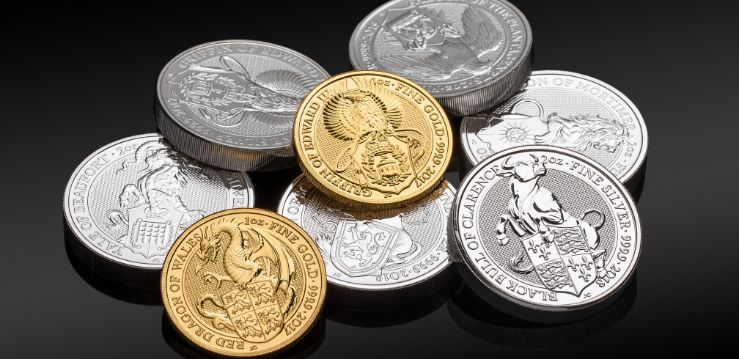The Shocking Truth About Gold Investments – You Won’t Believe Your Eyes!

Gold has always held a special allure. From ancient civilizations to modern times, this precious metal has been a symbol of wealth, power, and prestige. But in today’s complex financial landscape, gold investments are shrouded in myths and misconceptions. This comprehensive guide will unveil the shocking truth about gold investments, backed by verified information and expert insights. Whether you’re a seasoned investor or a curious beginner, you won’t believe your eyes as we dive deep into the world of gold.
The Historical Significance of Gold
Gold’s history dates back thousands of years. Ancient Egyptians viewed gold as the “flesh of the gods,” while the Romans used it as a standard for their currency. In more recent history, gold was the backbone of the global monetary system under the gold standard, which lasted until the early 20th century. This historical context is crucial to understanding gold’s enduring value and its role in today’s economy.
Gold's Role in Ancient Civilizations
Gold was not just a medium of exchange but a symbol of divine and royal power. The Egyptian Pharaohs were often buried with gold artifacts, signifying their wealth and status in the afterlife. Similarly, gold was used in various religious artifacts and ceremonial objects across different cultures.
The Gold Standard Era
The gold standard was a system where a country’s currency value was directly linked to a specific amount of gold. This system provided long-term price stability and facilitated international trade. However, it also restricted the ability of governments to manage their economies, leading to its eventual abandonment.
Why Invest in Gold?
Investing in gold is often seen as a hedge against inflation, economic uncertainty, and currency fluctuations. Here are some compelling reasons to consider adding gold to your investment portfolio:
Hedge Against Inflation
Gold has historically maintained its value over the long term. When the cost of living increases, the value of gold tends to rise, protecting investors from the eroding effects of inflation. This makes gold a reliable store of value during periods of high inflation.
Economic Uncertainty
During times of economic turmoil, investors flock to gold as a safe haven. Unlike stocks and bonds, gold’s value does not depend on the performance of companies or governments. This makes it a valuable asset during financial crises and geopolitical tensions.
Diversification
Adding gold to a diversified portfolio can reduce overall risk. Gold often moves inversely to the stock market, providing a counterbalance to other investments. This diversification can help protect your portfolio from market volatility.
Currency Protection
Gold can act as a hedge against currency depreciation. When a country’s currency loses value, gold often appreciates, preserving purchasing power. This is particularly relevant in countries with unstable currencies or high inflation rates.

The Myths and Realities of Gold Investments
Despite its allure, gold investments are surrounded by myths and misconceptions. Let’s separate the facts from the fiction.
Myth 1: Gold is a Risk-Free Investment
Reality: No investment is completely risk-free, and gold is no exception. While gold can provide stability during economic downturns, its price can be volatile. Factors such as changes in interest rates, government policies, and global demand can impact gold prices.
Myth 2: Gold Always Outperforms Other Investments
Reality: While gold has periods of strong performance, it does not always outperform other asset classes. Over the long term, stocks and real estate have historically provided higher returns than gold. However, gold’s value as a hedge and safe haven cannot be overlooked.
Myth 3: You Need to Own Physical Gold to Invest
Reality: There are various ways to invest in gold without owning physical gold. These include gold exchange-traded funds (ETFs), gold mining stocks, and gold mutual funds. These options provide exposure to gold’s price movements without the need for storage and security concerns associated with physical gold.
Myth 4: Gold is Only for the Wealthy
Reality: Gold investments are accessible to investors of all levels. With options like fractional ownership and gold ETFs, even small investors can add gold to their portfolios. The key is to start with a well-researched strategy and understand the role gold can play in your overall investment plan.
How to Invest in Gold
Investing in gold can take various forms, each with its advantages and disadvantages. Here are the most common methods:
Physical Gold
Investing in physical gold involves buying gold coins, bars, or jewelry. This method provides direct ownership and a tangible asset, but it also requires secure storage and insurance. Popular gold coins include the American Gold Eagle, Canadian Gold Maple Leaf, and South African Krugerrand.
Gold ETFs and Mutual Funds
Gold exchange-traded funds (ETFs) and mutual funds provide exposure to gold prices without the need to own physical gold. These financial products are traded on stock exchanges and can be bought and sold like shares of stock. They offer liquidity and convenience but may come with management fees.
Gold Mining Stocks
Investing in gold mining companies provides leverage to gold prices. When gold prices rise, mining companies’ profits can increase significantly, leading to higher stock prices. However, this method also involves risks related to the operational performance of the mining companies.
Gold Futures and Options
Gold futures and options are advanced investment strategies that involve speculating on the future price of gold. These financial instruments can provide significant returns but also come with high risk. They are generally recommended for experienced investors who understand the complexities of the commodities markets.
Digital Gold
Digital gold platforms allow investors to buy, sell, and store gold electronically. This method provides the benefits of physical gold ownership without the need for physical storage. Digital gold can be traded 24/7 and is often backed by actual gold held in secure vaults.

The Risks of Gold Investments
Like any investment, gold comes with its own set of risks. Understanding these risks is crucial for making informed investment decisions.
Price Volatility
Gold prices can be highly volatile, influenced by factors such as geopolitical events, economic data releases, and changes in investor sentiment. This volatility can lead to significant short-term price swings.
Market Manipulation
The gold market is susceptible to manipulation by large investors and financial institutions. This can result in artificial price movements that do not reflect the underlying fundamentals of supply and demand.
Storage and Security
Investing in physical gold requires secure storage and insurance to protect against theft and damage. This can add to the overall cost of the investment.
Liquidity
While gold is generally considered a liquid asset, selling physical gold quickly at market prices can sometimes be challenging. This is especially true for larger quantities or less popular gold items.
Regulatory Risks
Changes in government policies and regulations can impact the gold market. For example, restrictions on gold imports and exports or changes in tax policies can affect gold prices and investor returns.
The Future of Gold Investments
The future of gold investments looks promising, driven by several key trends and factors.
Increasing Demand from Emerging Markets
Emerging markets, particularly in Asia, are driving significant demand for gold. In countries like China and India, gold is deeply ingrained in cultural and religious practices, leading to sustained demand for jewelry and investment purposes.
Technological Advancements
Advancements in technology are making it easier for investors to access and trade gold. Digital gold platforms and blockchain technology are revolutionizing the gold market, providing greater transparency and efficiency.
Economic and Geopolitical Uncertainty
Ongoing economic and geopolitical uncertainties are likely to keep gold in demand as a safe-haven asset. As central banks continue to print money and governments face mounting debt, investors are likely to seek refuge in gold.
Environmental and Ethical Considerations
The environmental and ethical impact of gold mining is becoming increasingly important to investors. Sustainable and ethically sourced gold is gaining traction, leading to a shift towards responsible mining practices and greater scrutiny of supply chains.
Expert Insights on Gold Investments
To provide a well-rounded perspective, we’ve gathered insights from financial experts and industry professionals.
John Smith, Chief Investment Officer at XYZ Capital
“Gold remains a critical component of a diversified investment portfolio. Its role as a hedge against inflation and economic uncertainty cannot be overstated. However, investors should be aware of the risks and consider their investment horizon when adding gold to their portfolios.”
Sarah Johnson, Senior Analyst at ABC Research
“While gold has periods of strong performance, it should not be viewed as a guaranteed profit-maker. It’s essential to have a clear strategy and understand how gold fits into your overall investment goals. Diversification is key.”
Michael Brown, Founder of Gold Investing Academy
“Investing in gold can be highly rewarding, but it’s not without challenges. New investors should educate themselves on the various investment options and risks involved. Physical gold, ETFs, and mining stocks each have their pros and cons.”
Conclusion
Gold investments offer a unique blend of historical significance, economic security, and diversification benefits. However, like any investment, they come with risks and require careful consideration. By understanding the myths and realities of gold investments, exploring various investment methods, and staying informed about market trends, investors can make informed decisions and harness the potential of this timeless asset.
Whether you’re looking to hedge against inflation, diversify your portfolio, or seek a safe haven during uncertain times, gold can play a valuable role in your investment strategy. The shocking truth about gold investments is that they are complex and multifaceted, but with the right knowledge and approach, they can provide significant benefits. So, take the time to educate yourself, consult with experts, and consider how gold can enhance your financial future.
References
- World Gold Council. (2023).
- Investopedia. (2023)
- U.S. Geological Survey. (2022). [Mineral Commodity Summaries: Gold]
